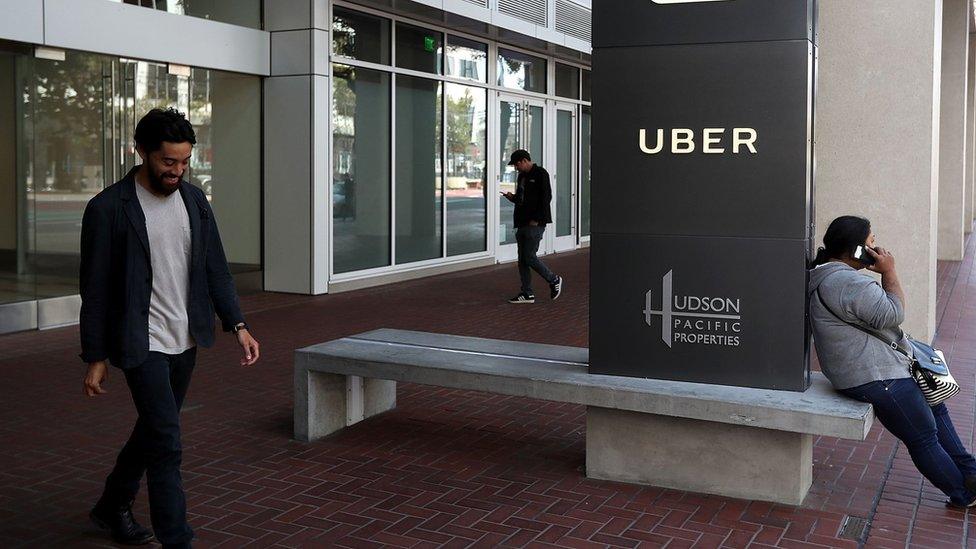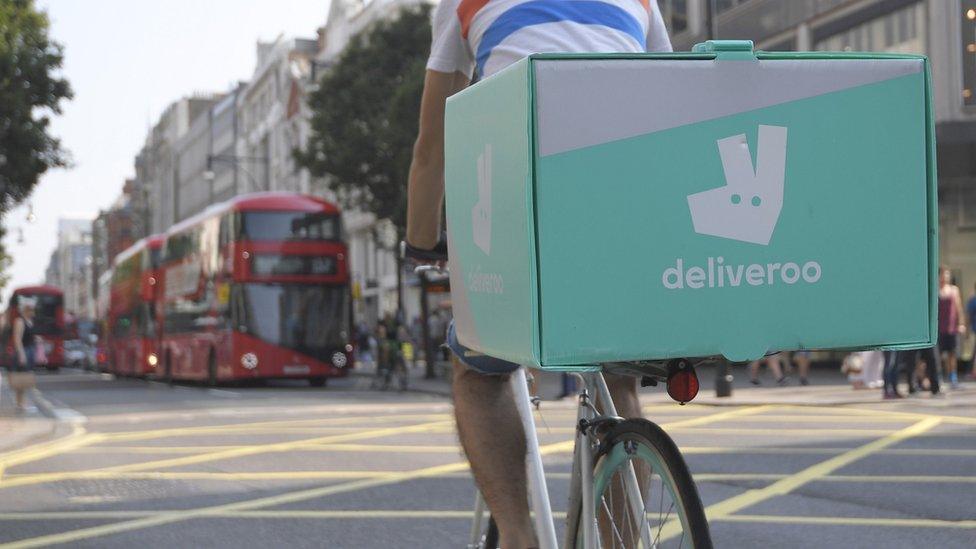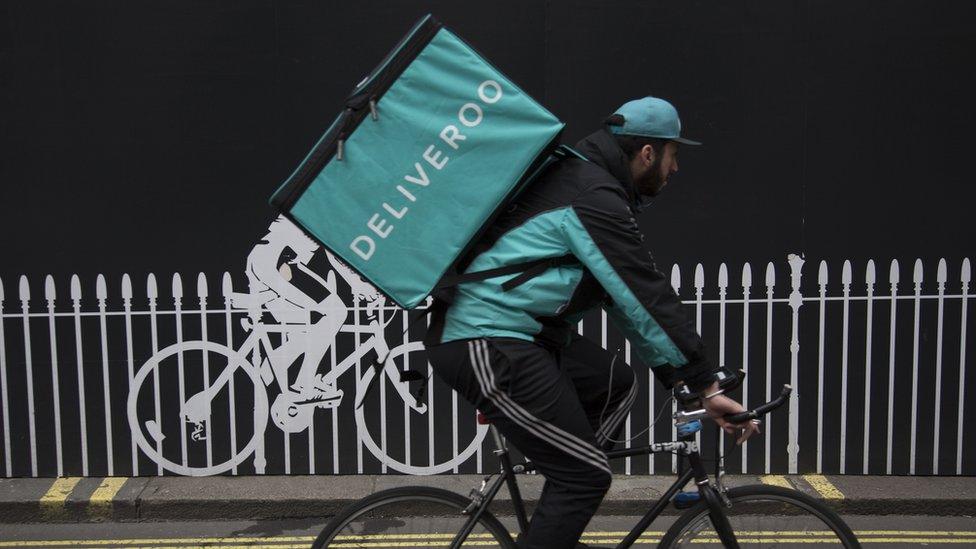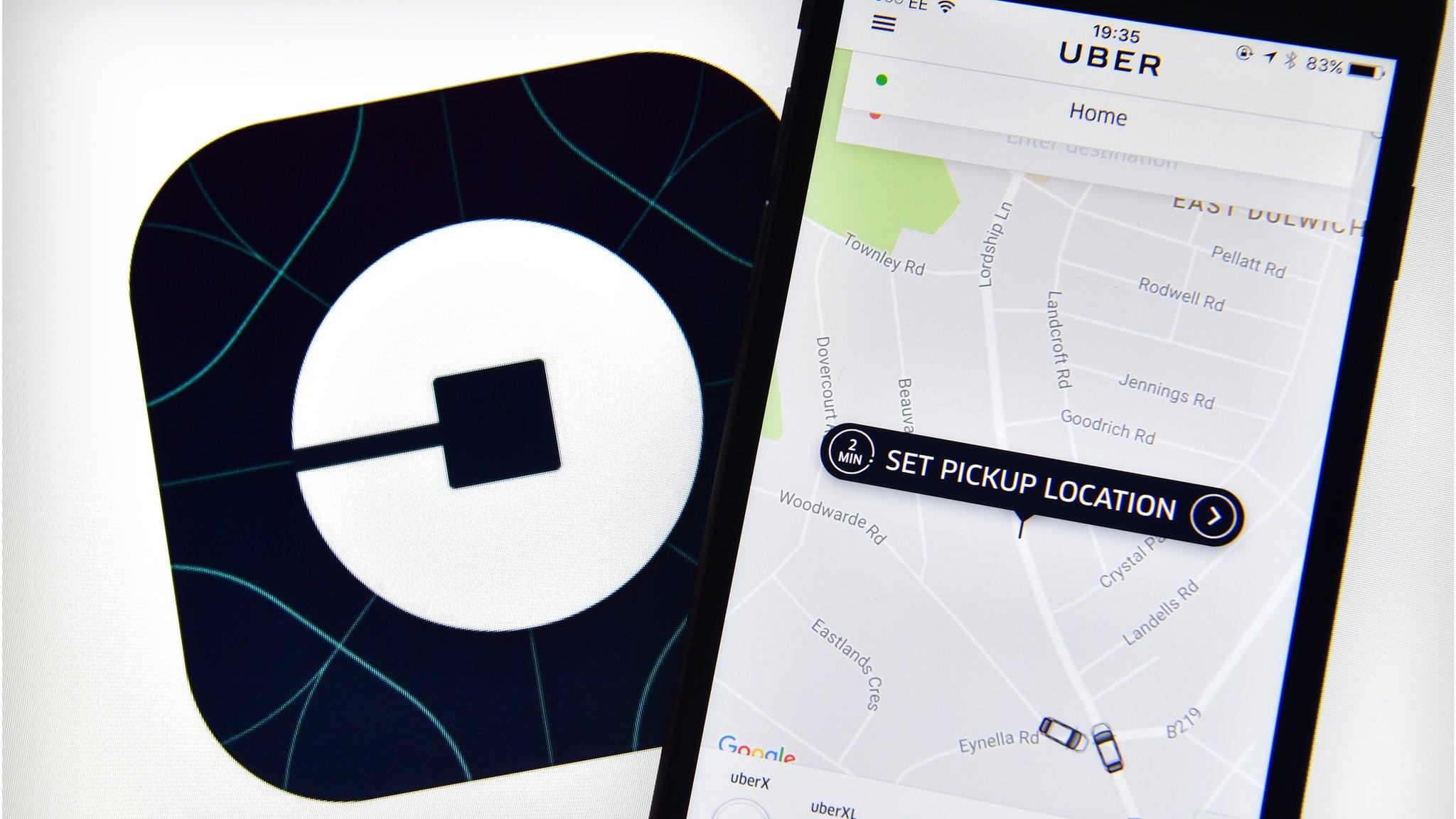Is Uber getting too vital to fail?
- Published
- comments

Uber is currently operating at a massive loss
The town of Summit, New Jersey, is about 30 miles west of Manhattan. It has a population of around 20,000.
While I've never been there myself, I can tell you one thing: finding a parking spot at the train station can be a complete nightmare.
So Mayor Nora Radest was planning to do the obvious and build more spaces to accommodate the growing demand. It would have cost around $10m (£7.9m).
That's an awful lot of money, and so instead she took on an interesting experiment. Everyone who has a parking permit at the station is now entitled to a free Uber ride to and from their homes.
"Our innovation has the potential to shape how municipalities think about and implement parking options in the future," the Mayor said.
Indeed it does. Across the US, Uber (and sometimes its rival, Lyft) are being used to slowly plug gaps normally filled by public and private investment in infrastructure and services.
In Los Angeles, for instance, residents living in some new apartment blocks are given $100 Uber credit in lieu of a place to park.
In Pinellas County, Florida, local politicians realised that in lightly-populated areas it was cheaper to subsidise Uber journeys by 50% than it was to extend a bus route.
Also in Florida, Altamonte Springs has all but done away with public transport altogether, instead subsidising all Uber trips in the town by at least 20%, external.
In Washington DC, those in charge of the emergency services were looking at a "creative" way of sometimes using Uber cars instead of ambulances for non-emergencies.
Lawrence Hanley from the Amalgamated Transit Union - which represents public transport workers - told The Verge the speed at which ride-sharing services were replacing existing public services was "like a tsunami".
'Staggeringly unprofitable'
As it stands, all the ideas I've outlined above make a great deal of sense. Why run empty buses all day when you can just ferry passengers about in more comfort for less money?
But with local authorities turning to Uber instead of investing in the city itself, the question becomes: what happens if Uber goes bust?
An in-depth, ferocious assessment of Uber's finances by the Naked Capitalism blog concluded that the company was "staggeringly unprofitable".
The company of course disputes this and argues that like many Silicon Valley companies - with Amazon being the prime example - massive losses are what's needed in order to speed up growth.

Uber is investing heavily in self-driving technology, but it will be years until it is ready
The firm is still a private company, and thus, verified numbers are rare. But one leak at least suggests that in 2015 it made a loss of $2bn on revenues of $1.4bn.
Much of that loss is due to subsidising fares. If you've ever got an Uber and wondered how on earth drivers could earn money from such cheap fares, the answer is that it appears you're typically only being asked to pay about 40% of the total cost. The rest is being paid by Uber so that drivers can make an above minimum-wage living (though often not by much, as many have pointed out).
To date, Uber has had in the region of $16bn in investment - valuing the firm at $69bn. Plenty in the kitty, but the pursuit of growth is proving incredibly expensive, and those huge losses are showing no signs of going away: a recent Bloomberg report, external said the company lost $1.2bn in the first half of this year.
Uber is diversifying where it can. Uber Pool, which groups up riders going in a similar direction, is designed to be more efficient, squeezing in more trips in less time - though it still has a lot to do to win over both riders and drivers. Uber Eats is an attempt to offer a far better food delivery service, removing the mystery around when your food will arrive. And Uber Rush is the firm's courier service.
All good ideas - though what will really tip the numbers in Uber's favour is if it is able to get rid of the most costly piece of its operation: human drivers. On Monday I wrote about how it's investing in artificial intelligence in order to potentially speed up that process and make self-driving cars a reality. But don't expect that within the next decade.
Pleasing everyone
So where does that leave us?
It leaves us wondering what might happen when Uber needs to make ends meet.
In a later piece, external, Naked Capitalism suggests only an unregulated monopoly would allow Uber to become profitable.
But Uber maintains that's not what's on the horizon.
"Clearly, we have lots of competition in the ride-sharing space," a company spokeswoman told me in an email.

Uber is growing rapidly and will soon be opening a new headquarters in Oakland, California
"And that's not counting the other ways that people can choose to get around, including public transit, bicycles, rental cars, taxis, carpools and, of course, private cars."
This statement may be true today, but with local authorities deciding to go with Uber instead of investing in public transport, the number of affordable alternative options to Uber is beginning to shrink.
Regardless, Uber is doing its best to reassure consumers that it won't put up prices - as it wants to make Uber more affordable than using your own car.
But at the same time, it's telling investors that the reward for backing it through the losses is that eventually the company will be big enough to make the numbers work.
Can it please everyone? There is a fear that once Uber is in a truly dominant position, it will simply raise prices in order to finally balance the books. It can't subsidise drivers forever, and while it claims to be able to bring costs down by making its service more efficient, those savings don't yet seem significant enough to turn things around.
For the towns and cities that chose to work with Uber, this could put them in a very difficult situation. Stop paying Uber, and entire parts of town could be suddenly cut off from affordable public transport. Imagine having to worry if the school run was going to be affected by surge pricing.
Towns like Summit would perhaps be left with no option other than to spend more to cover the imbalance of Uber's business model - after all, they never did build the car park they so desperately needed.
Follow Dave Lee on Twitter @DaveLeeBBC, external and on Facebook, external
- Published9 December 2016

- Published8 November 2016

- Published28 October 2016
